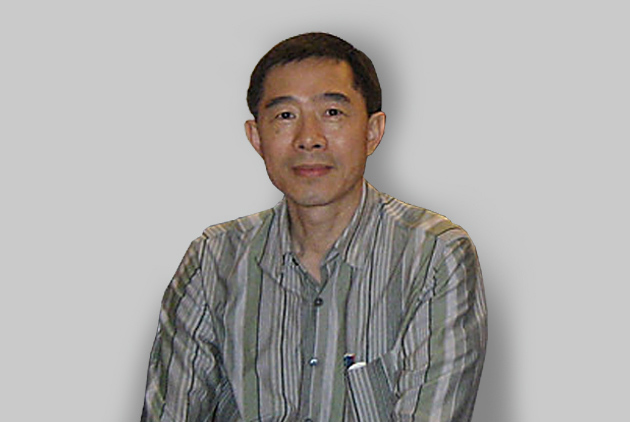A Turning Point for SMIC?
Liang Mong-song Jumps Ship Again

Source:CW
Former TSMC R&D executive Liang Mong-song, dubbed the biggest traitor in Taiwan’s semiconductor industry for leaking trade secrets to South Korean rival Samsung, has jumped ship again, this time taking the post of co-chief executive with China’s SMIC.
Views
Liang Mong-song Jumps Ship Again
By Liang-rong ChenFrom CommonWealth Magazine (vol. 634 )
After months of rumors, it has finally been confirmed that Liang Mong-song, after leaving Samsung, has reported for a new job at Semiconductor Manufacturing International Corporation (SMIC), China’s largest chip foundry.
On October 16, SMIC announced in a press release that Liang had been appointed Co-CEO, alongside incumbent CEO Zhao Haijun, to take charge of process technology development.
While Liang served as senior director of R&D at TSMC, the company developed leading-edge process technology. Subsequently, Liang was poached by rival Samsung, becoming chief technology officer at Samsung’s System LSI division. He helped the South Korean foundry win the technology race against TSMC for 16-nm and 14-nm processes.
Since late last year, rumors abounded that Liang was going to join SMIC once his contract with Samsung expired, but nothing happened. Then in May of this year, SMIC CEO Chiu Tzu-yin, a former TSMC fab director, ceded his job to Zhao to assume the post of vice chairman.
Chinese Backing Renders No-Compete Clause Useless
At the time, industry insiders who are familiar with SMIC noted that, given that the “roadblock” Chiu presented had been moved out of the way, Liang’s move to SMIC was a done deal. The only obstacle to the job change was the no-compete clause in Liang’s contract with Samsung.
“If they want to sue him, let them sue,” remarks an executive with an SMIC customer. “In any case, the Chinese government will work things out.”
Chiu, who took the helm of SMIC in 2011, can pride himself on making the struggling, loss-making chip foundry profitable.
However, during his tenure as CEO, the company, which was also beset by internal strife, never appointed a chief technology officer. The SMIC board, representing the stance of the Chinese government, demanded that Chiu take responsibility for the company’s technological backwardness and hunt for a CTO who could help SMIC catch up to the industry technology leaders. Yet Chiu made only slow progress, and even told the board that he himself was the CTO.
Chiu had his own concerns. In 2016, SMIC posted after-tax net profit of NT$7.6 billion (US$253 million), which was not only a new high but also saw the company closing in on Taiwanese rival UMC’s NT$8.3 billion after-tax net profit.
Shrinking Away from Profit-Eating Asset Investments
If the Chinese government had had its way, SMIC would have invested massively in 16/14-nm FinFET (Fin Field Effect Transistor) process technology. FinFETs operate at a lower voltage, offer a faster operating speed, and consume much less power.
However, the technological hurdles to these advanced processes are extremely high and involve massive investment in R&D personnel and equipment. Industry insiders recall how Chiu once said in private that the development of FinFET mass production technology would require the procurement of equipment worth tens of billions of New Taiwan dollars. Asset depreciation alone would eat deeply into SMIC’s profits.
Moreover, he argued that chips using 16/14-nm process technology are so expensive in design and production that most smaller IC design houses cannot afford them. Even if SMIC successfully mass-produced FinFETs, it would not necessarily be able to lure large customers away from TSMC. Instead, SMIC should be pragmatic and stick with the less-advanced 28-nm process technology, for which market demand still outstripped supply.
Bowing to political and corporate pressure , Chiu came up with a compromise proposal – setting up a subsidiary that engaged exclusively in FinFET R&D.
Then, asset depreciation would not affect SMIC’s financial situation.
Consequently, a joint venture - SMIC Advanced Technology Research & Development (Shanghai) Corporation - was formed two years ago by SMIC, Huawei, Belgian nanoelectronics research center imec, and a Qualcomm Inc. affiliate. At the time, it was proclaimed that the collaboration was aimed at building China’s most advanced IC R&D platform, with a focus on developing 14-nm logic technology for mass production.
However, China’s “big fund”, the National Integrated Circuit Industry Investment Fund, was not willing to invest in the new company because SMIC would not grant it a stake in return, which would have allowed it to exert some influence on the company’s direction.
So Chiu’s grand plans remained wishful thinking. “Without [the big fund’s] 20 billion, you can only pretend to be in the game,” observes an industry insider who is familiar with the internal situation at SMIC.
State Meddling Causes Concern
Now that Liang, with his rich experience in advanced process technology, has assumed his post at SMIC, it seems only natural that the Chinese state will bankroll the company’s ambition to go for FinFET process technology.
Still, with the political mission overriding commercial logic, there is not much reason to be optimistic about SMIC’s performance in the coming years.
“When the will of the state comes into play, there’s no money to be made,” posits the industry insider.
Publicly commenting on the prospects of the Chinese semiconductor industry, Goldman Sachs’ lead analyst Donald Lu recently noted that of all fields, chip foundries come with the highest technological hurdles. “SMIC is having a hard time chasing after TSMC and UMC, and their profit margin is slim,” Lu pointed out.
That situation is unlikely to change anytime soon.
Translated from the Chinese article by Susanne Ganz
Additional Reading
♦ The Liang Mong-song Story: Hunting Down a Turncoat
♦ TSMC's IP Settlement with SMIC: Why TSMC Showed Mercy
♦ Safeguarding Trade Secrets: Taiwan's NT$2 Trillion Threat







